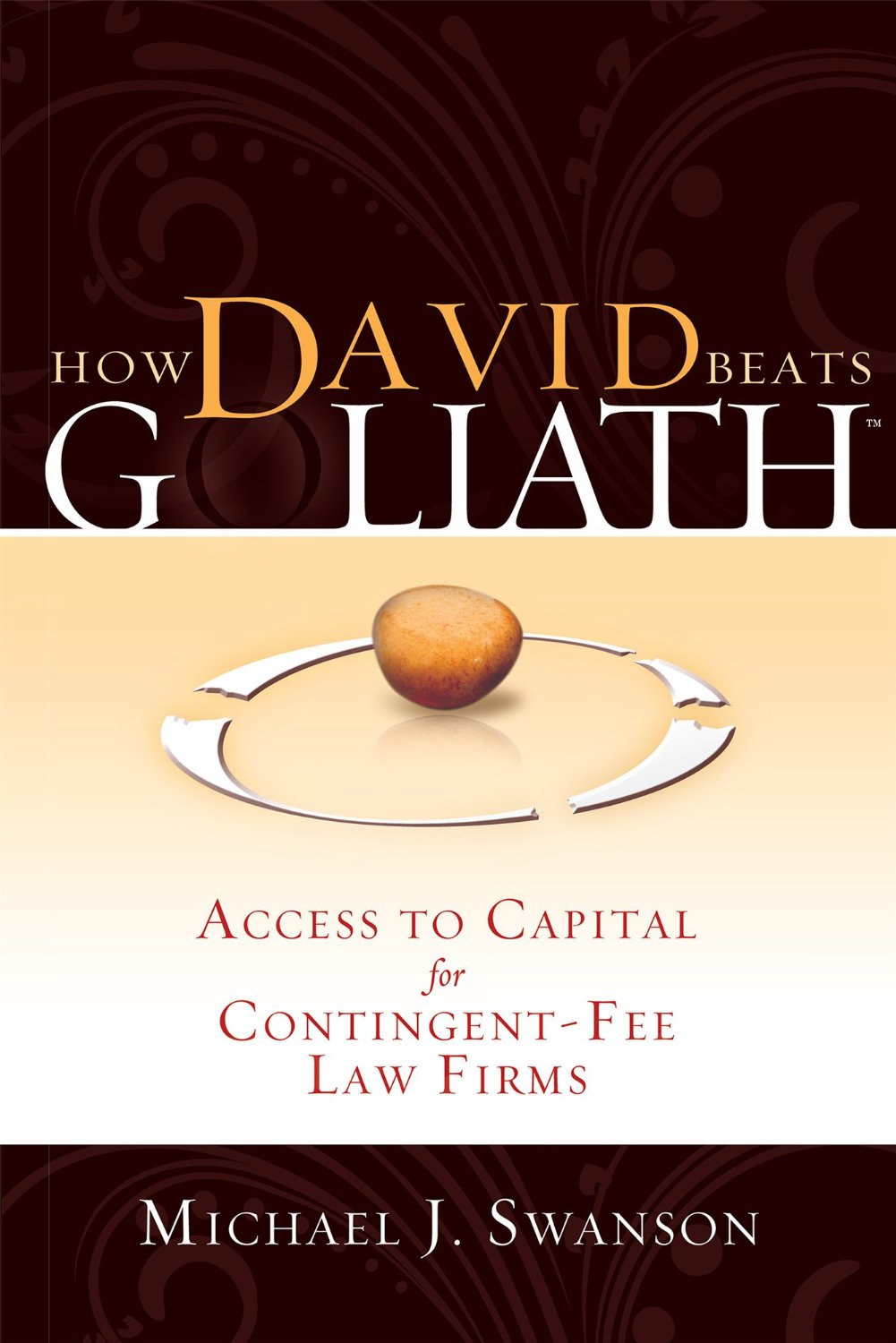
Opening up a contingent-fee law practice that deals largely with personal injury claims is admirable, but not often lucrative. Michael J. Swanson, author of How David Beats Goliath: Access to Capital for Contingent-Fee Law Firms, understands this more than most. He is an expert in the law firm financing industry, having spent 14 years as the CEO of Advocate Capital, Inc. His book details the financial struggles that often plague contingent-fee law firms and how those law firms can secure the funding to diminish their struggles.
The book is part love letter and part financial guide for trial attorneys. Swanson clearly harbors a great deal of respect for the work that trial lawyers do, but he’s also in a position to offer them advice on how to run the business aspects of their firms. He recognizes that most trial lawyers choose their line of work to help people, but that altruistic notion doesn’t guarantee financial security. How David Beats Goliath is, thus, nothing short of required reading for most contingent-fee law practices.
It starts out by outlining the various financial pitfalls that upstart law practices and even established ones will face. It’s certainly not cheap to start any kind of business, but this is especially true in the world of contingent-fee law firms. Swanson notes that startup costs alone can force your business to accrue a lot of debt. There is also no fast way to earn capital or cash flow. A startup restaurant, for instance, starts earning cash flow as soon as customers start walking through their doors. Contingent-fee law firms, on the other hand, have to first get cases, take them to trial, and win them if they expect to earn any money.
Swanson is, of course, preaching to the choir when it comes to established contingent-fee law firms. But, the information he outlines in this first section is vital for those who are considering entering the arena of contingent fee law.
Swanson then goes on to talk about basic accounting precepts that every business (including law firms) should follow. Again, these are invaluable for many trial lawyers who likely haven’t spent a lot of time studying accounting or financial matters. You can certainly see why Swanson speaks at seminars, conferences, and trial lawyer meetings across the nation.
The real meat of the book comes with Swanson’s ten sources of funding for contingent-fee law firms. The ten sources are as follows:
- Fee Sharing
- Contingent Lenders
- Appeal Funding
- Settlement Funding
- Finance Company Loans
- Credit Cards
- Partner’s Cash
- Vendor Financing
- Bank Line of Credit
- Loans with Interest Pass-through
Swanson details the advantages and disadvantages of each one of these sources of funding. Fee sharing essentially involves sharing case revenue with one or more law firms in return for advanced case funding. Swanson notes that this can be expensive for smaller law firms that typically share fees with much larger, more established firms. Interest rates can skyrocket with fee sharing, meaning that contingent-fee lawyers should proceed with caution.
Contingent lenders, appeal funding, and settlement funding are all related in that they essentially purchase fees that have yet to be secured. Contingent lenders purchase part of the future fees on a case that has yet to be settled. Appeal funding comes from finance companies that buy earned fees in the event that an appeal is successful. Settlement funding also comes from finance companies in cases where a settlement has been reached, but the payment may be delayed. Basic finance company loans are similar, but the future fees aren’t technically being “purchased.”
Many law firms opt for credit cards or partner’s cash to fund their ventures. In fact, funding the operation with an owner’s money is the most common way for law firms to secure capital. Of course, Swanson outlines the pitfalls of these options, noting that credit cards can unexpectedly increase interest rates over time, and using your own personal cash means that you might waste personal assets.
The second most common source of funding according to Swanson is a bank line of credit. Bank lines of credit are typically the least expensive options, assuming you can comply with the banks regulations. Of course, whichever method you choose to finance your law firm, Swanson says that it’s important to understand the potential risks and benefits. Look at your financial statements and let a qualified accounting professional take a look at them, as well.
Throughout How David Beats Goliath, it’s clear that Swanson believes in what trial lawyers do. He believes in their work so much that he’s not even taking any of the profits that his book makes. Instead, he’s donating it all to the Seventh Amendment Fund which is operated by the American Association of Justice (AAJ). The Seventh Amendment Fund is designed to provide the AAJ with the financial support and other resources to help American citizens exercise their right to a trial by jury as outlined in the Seventh Amendment.
Clearly, there are plenty of reasons to buy this book. Although it’s geared toward trial lawyers trying to find funding for their contingent-fee law practices, it can also be an informative look into the world of trial attorneys for laypeople. It’s an important piece of literature and one that can help the David-like law practices effectively take on the Goliaths at insurance companies with unlimited resources.

